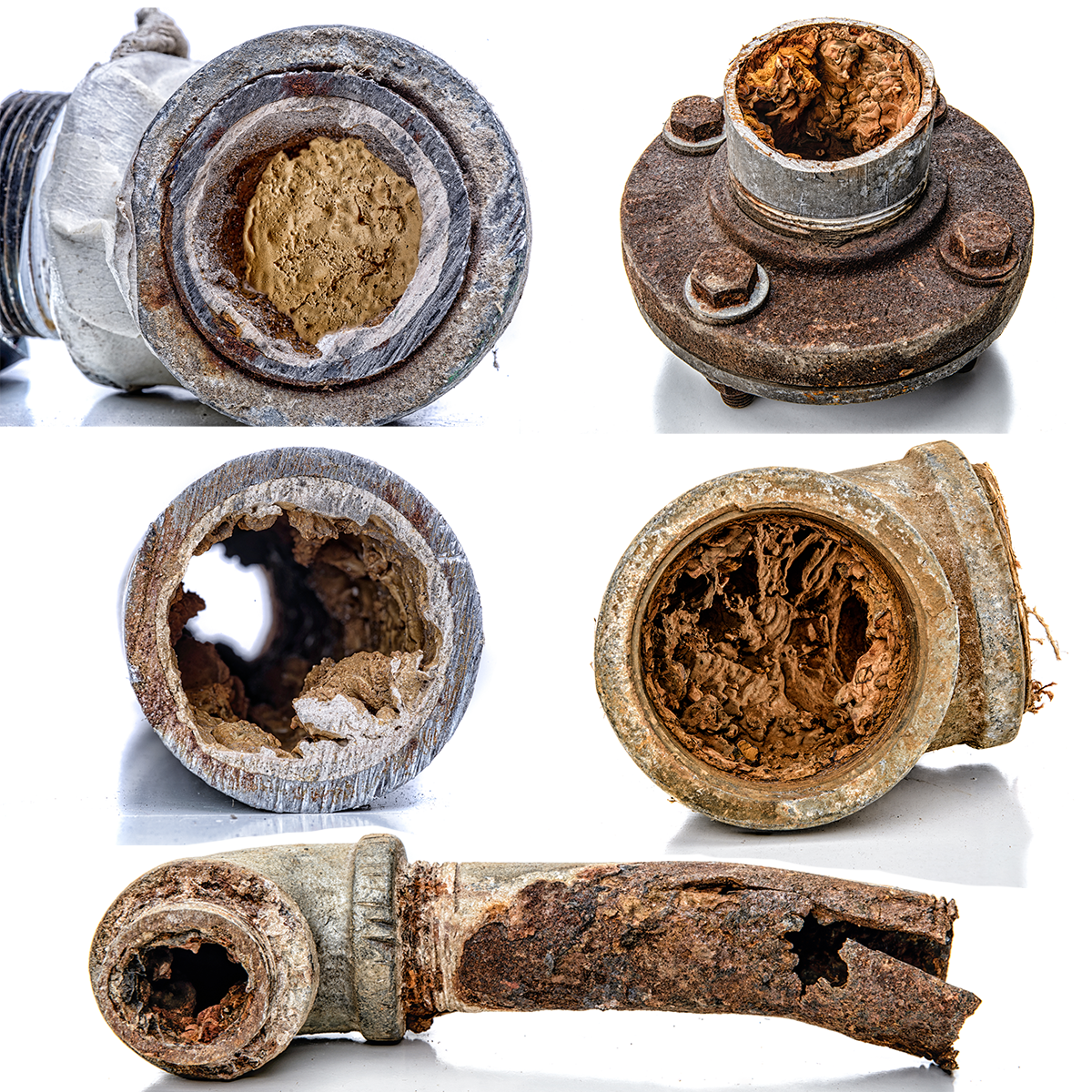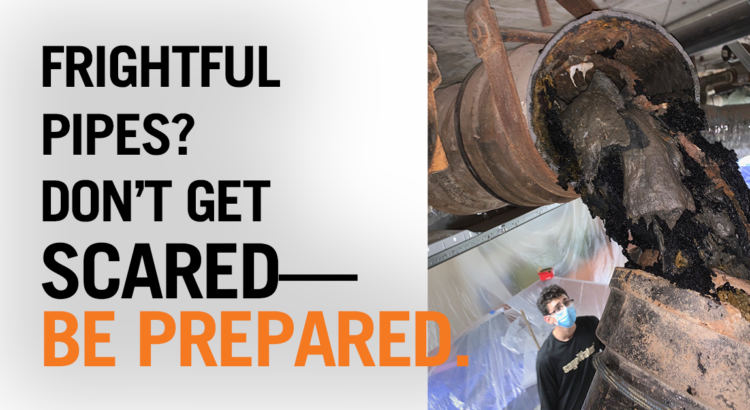
What causes pipes to clog?
Human-caused clogs, such as from hair building up, are typically obvious. But did you know your supply pipes and DWV pipes may clog for other reasons? When galvanized pipe corrodes, that corrosion may create heavy buildup over time that slows down water supply—and it’s a bit horrifying to think of that gross buildup in your drinking water lines!
In your drain, waste, vent (DWV) pipes, corrosion, shale build-up, rust, and even drain line back-ups that flow up into the vent portion of the piping system can all cause the vent lines to become compromised. In fact, corrosion can eventually lead to clogged lines, preventing the drain system from functioning properly.
And unless clogs are avoided, you may be facing a repipe much sooner than the originally anticipated life expectancy of the pipe.
How to prevent and manage clogged drain lines
Avoiding major piping system failures requires being proactive rather than reactive. Proper maintenance and addressing problems quickly can help avoid catastrophic failures that drive up expenses and disrupt residents. Consider these strategies to dealing with clogs:
- Implement a maintenance plan: Preventative maintenance is critical to help reduce the likelihood of clogged pipes and can significantly extend the usable life of your plumbing system. Consult with your plumbing service provider for recommendations for maintenance options and a proposed schedule.
- Monitor for symptoms: Back-ups, slow drains, or odors can be indicators that your piping system is no longer operating as designed. Clogs may be one-off blockages caused by a tenant putting something down the drain they shouldn’t have, or systemic clogs resulting from a compromised plumbing system.
- Clean your pipes: Clear systemic clogs with one of two methods: For shorter runs of 50 feet or less, use a mechanical “snake,” which is inserted into the pipe to break up the obstruction. For longer runs and larger pipes, hydro-jetting consists of a high-pressure stream of water that breaks through blockages. A word of caution: Hydro-jetting carries a risk of doing damage to older, degraded piping systems.
Both procedures should be performed by a professional who is experienced with diagnosing and unclogging drains; the investment is worth avoiding making the problem worse with poor techniques or incorrect diagnoses.
- Know when it’s time to replace your pipes: If widespread blockages continue despite clearing, you likely have a systemic problem. An inspection using a camera fed into the pipes can help pinpoint the location and severity of blockages. If they are widespread and beyond repair, it may be time to consider a repipe.
While clogs can be a frightful sight, a proactive approach to your building’s piping system can help prevent long-term headaches.


